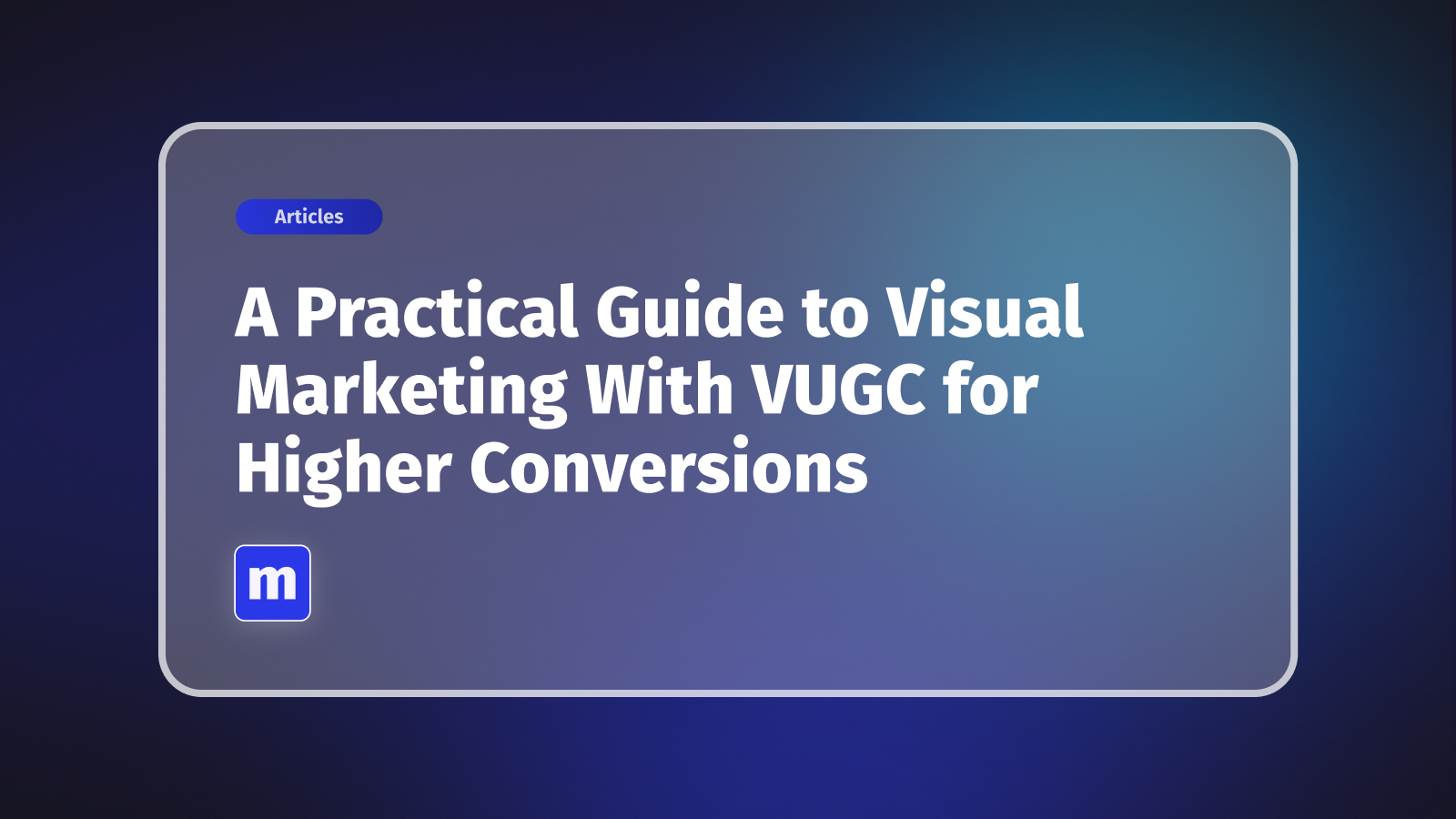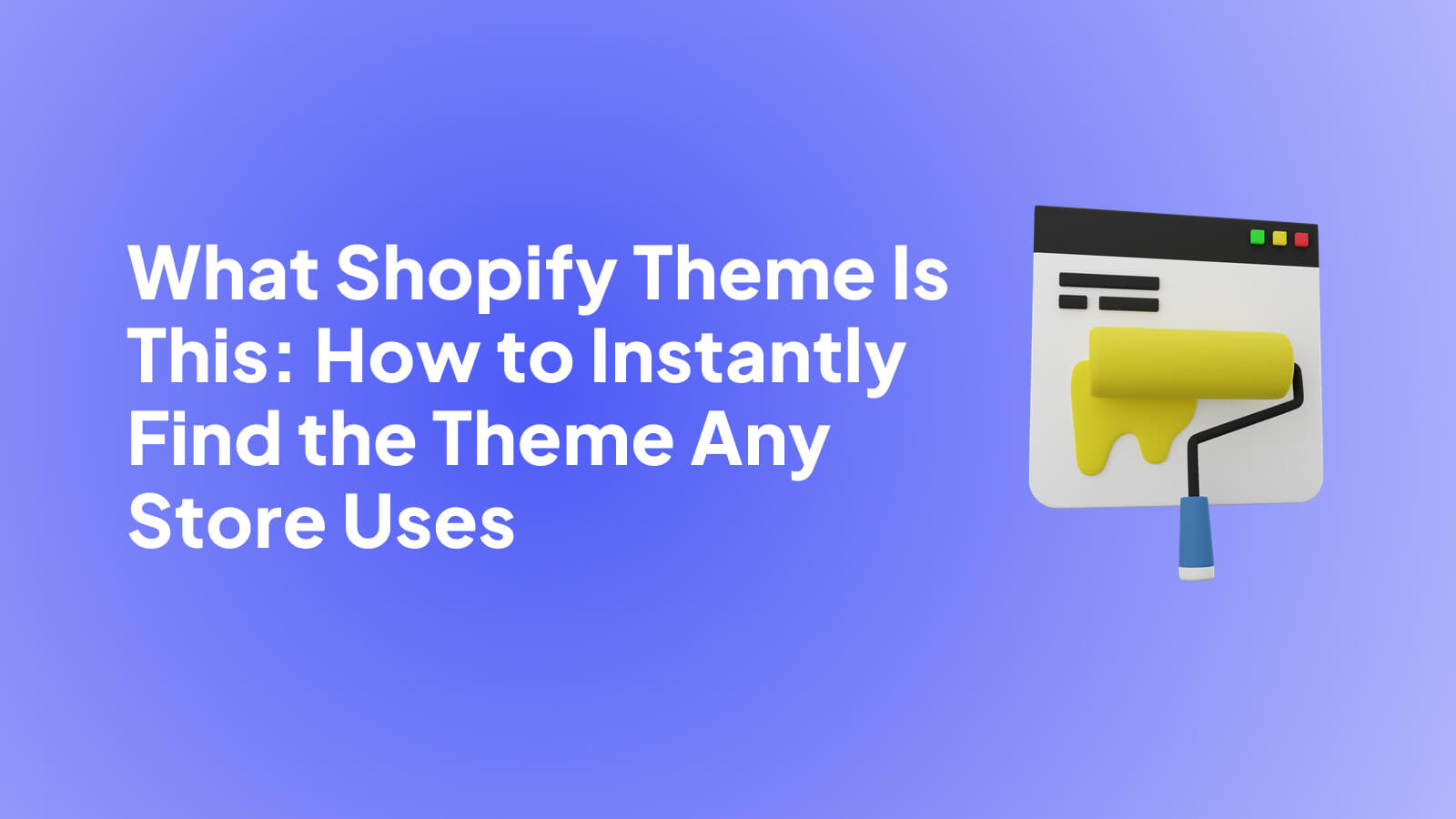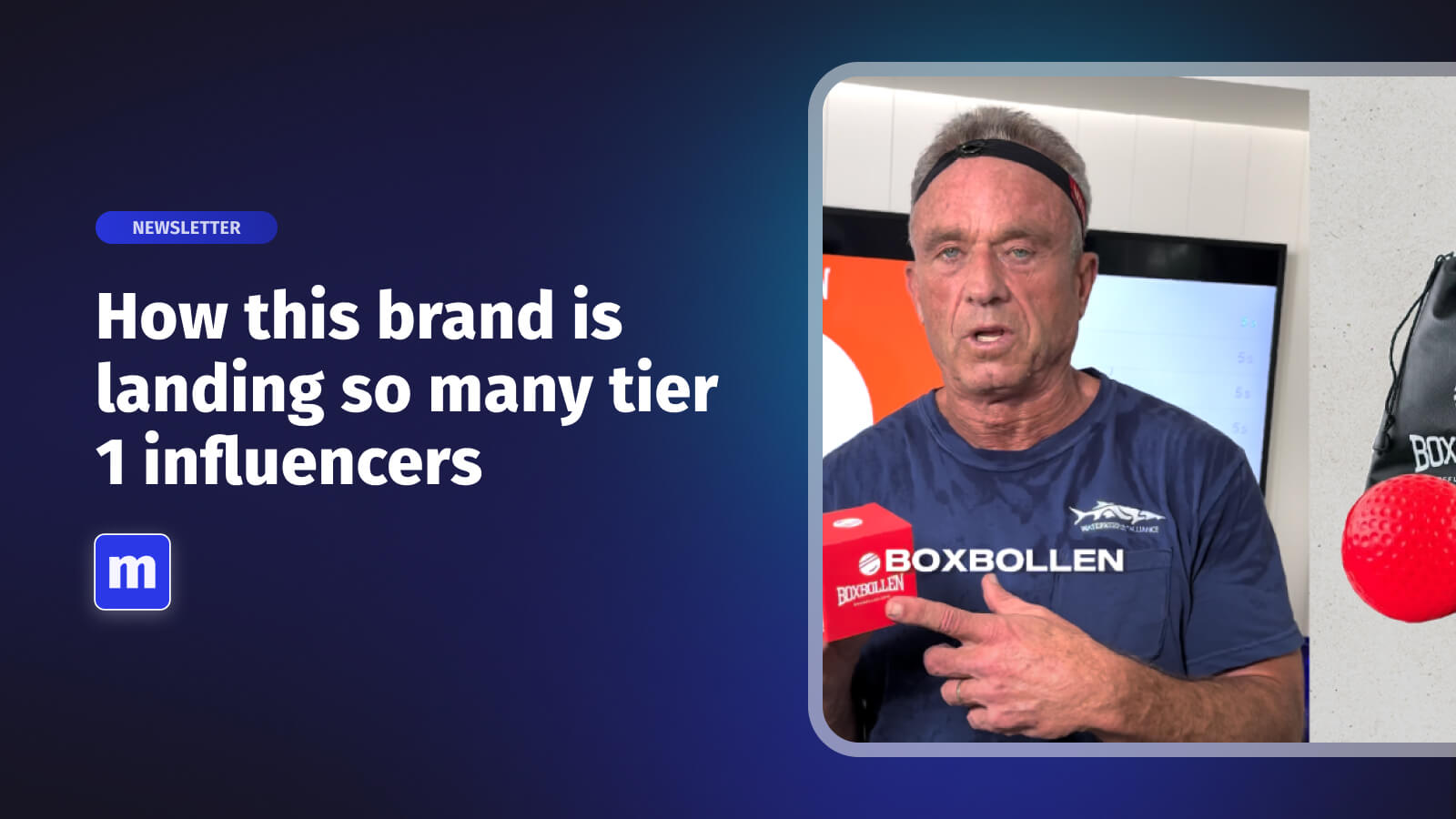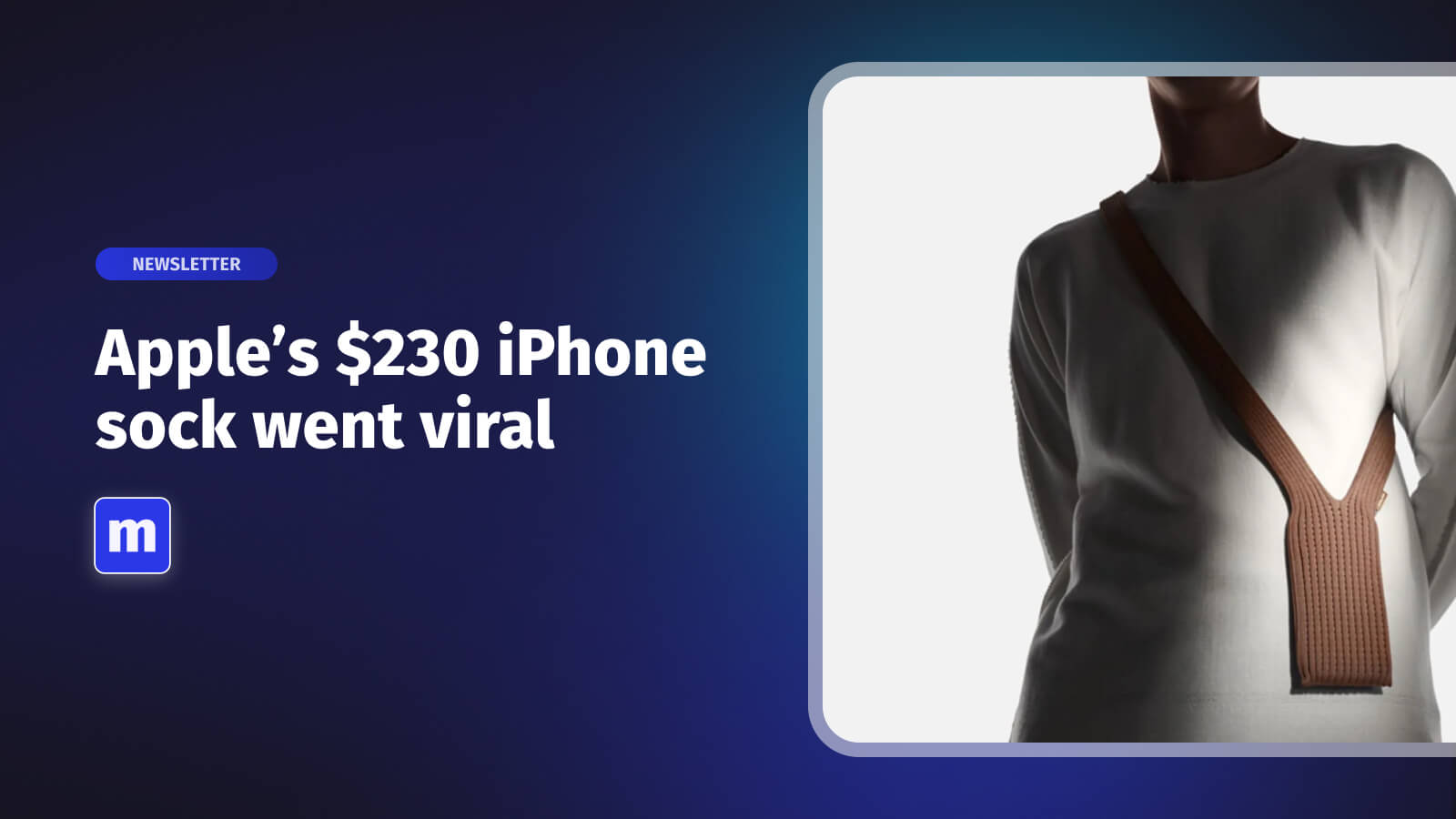
You've probably heard you can add video to a Shopify product page. It's true—you can upload it directly to the media gallery or just embed it from a service like YouTube. Simple enough. But just knowing how to do it misses the point. The real magic happens when you understand why it's one of the most powerful moves you can make for your store.
Why Product Videos Are Your Secret Conversion Weapon

Before we get into the nitty-gritty, let's talk business. Adding video isn't just a cosmetic upgrade to make your pages look cool. It's a genuine sales strategy that hits your bottom line. We all know static images are essential, but let's be honest, they can only tell part of the story.
Think of a great video as your best salesperson, working tirelessly around the clock. It’s there to build trust, show off your product's best features, and answer questions your customers haven't even thought of yet. It creates a connection that a flat photo just can't match.
Bridge The “Can’t Touch This” Gap
Let's face it, the biggest hurdle in e-commerce is that customers can't physically hold or inspect what they're buying. Video is the closest you can get to putting the product in their hands. It lets you demonstrate things that are almost impossible to capture in a still shot:
- Real-World Scale: Show how that handbag actually looks on someone's shoulder or how big that coffee table is in a real living room.
- Feel and Finish: A slow, detailed pan can reveal the soft texture of a sweater or the smooth finish of a wooden bowl.
- How It Actually Works: Unbox a gadget, show the steps to apply a skincare cream, or demonstrate a tool in action.
Showing this kind of detail does more than just sell—it dramatically cuts down on returns. When a customer knows exactly what’s arriving, their confidence skyrockets, and post-purchase satisfaction goes way up.
A Quick Stat to Chew On: Product pages with video can boost conversion rates by up to 80%. That's a massive lift. It comes down to one thing: videos give people the comprehensive view they need to feel certain about clicking "Add to Cart." If you want to dive deeper into the numbers, Shopify has some great insights on video marketing statistics.
Here’s a quick comparison of how video content stacks up against static images across key ecommerce metrics.
Video vs Static Images: A Performance Snapshot

The data speaks for itself. Video doesn't just complement images; it elevates the entire shopping experience, leading to better, more measurable results.
Ultimately, using video isn't just a feature; it's a key part of smarter broader e-commerce strategies. It’s about building trust and driving sales in a way that static content simply can't.
And if you're ready to get serious about your content game, we put together a complete guide on ecommerce video production to help you get started.
Fine-Tuning Your Video for Peak Shopify Performance

Adding a video to your product page is a great start, but making sure it actually helps your store is a whole different ballgame. A bulky, unoptimized video can drag your page speed into the mud, frustrating potential customers and causing them to leave before they even see your product in action.
Think of it this way: you wouldn't serve a gourmet meal on a paper plate. The video needs to be polished before you present it to your audience. The goal is to hit that sweet spot between crisp, beautiful quality and a lean, fast-loading file size.
Getting the Technical Details Right
Before you even think about uploading, let's nail down the technical specs. These aren't just suggestions; they're best practices learned from years of seeing what works.
- Format: Stick with MP4. It's the gold standard for web video, supported by virtually every browser and device out there. No need to get fancy here.
- Resolution: It's tempting to upload a massive 4K file, but resist the urge. 1080p (1920x1080 pixels) is the perfect resolution for Shopify product videos. It looks sharp and professional on any screen without bogging down your page load time.
- Aspect Ratio: Aim for a standard 16:9 widescreen format. This is the familiar shape you see on YouTube and most modern TVs, and it adapts perfectly for both desktop and mobile shoppers.
A slow website is a silent conversion killer. Research consistently shows that a single one-second delay in page load time can slash your conversions by 7%. Optimizing your video isn't just a technical task—it's a direct investment in your sales.
Compression and First Impressions
Once your video is edited and exported with the right settings, the final—and most critical—step is compression. This is where you shrink the file size without noticeably hurting the visual quality.
You can use a free tool like HandBrake or a simple online video compressor. Your target? Get that file size under 50MB. Honestly, the smaller, the better. This one action has the biggest impact on keeping your page zippy.
And don't forget the thumbnail! It's the movie poster for your video. Pick a bright, engaging, and high-quality frame that sparks curiosity and makes shoppers want to click play. This little detail can make a huge difference in how many people actually watch your video.
For a deeper dive into how video can transform your sales strategy, check out our complete guide to video marketing for ecommerce.
The Native Shopify Method: Adding Video to Your Product Gallery
Sometimes, the simplest approach is the best one. If you want a direct, no-fuss way to get a video onto your product page, Shopify’s built-in tools are your best bet. This native method lets you add a video right into the product image gallery, sitting alongside your photos for a clean, integrated feel.
You don't need to mess with third-party apps or touch a single line of code. It's the most straightforward path from having a video file on your computer to seeing it live in your store.
From your Shopify admin, just head to the product you want to edit and find the "Media" section. Here, you've got two choices: upload a video file directly or paste in a link from YouTube or Vimeo. It’s quick, easy, and feels like a natural part of the Shopify workflow.
Direct Uploads vs. Linking: What's the Difference?
So, should you upload the file or link it? There are a few things to consider here. A direct upload keeps everything in one place, but it chews up your store's file storage and can sometimes slow down page load times for your customers.
On the other hand, linking from a platform like YouTube or Vimeo offloads all that hosting bandwidth, which is a huge plus for keeping your site snappy. The main drawback? You might see those "related videos" pop up at the end, which could pull a potential customer away from your page. For most stores I've worked with, linking is the go-to for better performance.
The real beauty of this native method is that it costs you nothing. It’s an immediate, zero-cost way to dip your toes in the water and see how video actually impacts your sales before you commit to a paid app. It's perfect for a trial run.
Before you upload anything, you'll want to make sure your video file is ready. This infographic breaks down the key specs to aim for.

Getting these settings right from the start ensures your video looks sharp without dragging down your site's performance.
The Good and The Bad of Going Native
While this method is incredibly convenient, it's not without its limits. The customization options are pretty basic. You can’t change how the video player looks or add any cool interactive elements, like in-video "Add to Cart" buttons.
- Pro: It's completely free and already part of your Shopify admin.
- Pro: You don't need any technical or coding skills to get it working.
- Con: It’s missing advanced features like shoppable CTAs or in-depth video analytics.
- Con: Large, uncompressed files can slow down your page load times if you upload directly.
Shopify does give you some basic data on how people interact with your content, which is a good starting point. You can dig into these numbers to get a feel for what’s working and what isn't. For a closer look, you can learn more about using Shopify's own tools to track video engagement.
All in all, using the native Shopify feature is a fantastic first step. And if you need some inspiration on what kinds of videos really move the needle, our guide on how to create product videos has you covered.
Placing Videos in Your Product Description for Richer Context

Sometimes, just having a video in your main product gallery isn't enough. When a video tells a deeper story or demonstrates a complex feature, embedding it right inside your product description is the way to go. This approach lets you build a real narrative around the product.
Think about it. You could be selling a multi-step skincare kit. Placing a "how-to" video right next to the written instructions? That's a game-changer for customer confidence. It’s the perfect strategy for adding a video to your Shopify product page when context is everything.
Finding and Placing the Embed Code
The great news is, you don't need to be a developer to pull this off. It's really just a simple copy-and-paste job once you know where to look.
First, head over to the video you want to use on a platform like YouTube or Vimeo.
- Look for the "Share" button, which you'll almost always find right below the video player.
- After clicking it, a menu will appear. You're looking for the "Embed" option, which usually has a
< >icon. - Clicking that will give you a block of HTML code. Go ahead and copy that entire snippet.
Now, jump back over to your Shopify product editor. In the product description text box, look for a small button that says "Show HTML" or just has the same < > icon. This switches your editor from the standard visual view to the code view.
Expert Tip: Don't let the wall of code scare you. You're not changing anything, just adding to it. Find the exact spot in your text where you want the video to appear—maybe right after a paragraph explaining a key benefit—and paste in the HTML snippet you copied.
Click the "Show HTML" button again to toggle back to the normal editor. You should now see your video player sitting perfectly within your text. This powerful technique lets you surround your video with persuasive copy, answering customer questions with both words and dynamic visuals.
Alright, Shopify's built-in video tools are a decent start, but if you're serious about making sales, they're just the tip of the iceberg. To really transform your product videos from a simple "nice-to-have" into a core part of your sales engine, you need to head over to the Shopify App Store. A dedicated video app isn't just about putting a video on a page; it’s about making it interactive and, frankly, smarter.
These apps give you the features you need to move beyond a passive viewing experience. They provide the toolkit to build a much more sophisticated and effective video strategy—one that you can see reflected in your revenue.
Moving Beyond Basic Video to an Interactive Experience
The biggest game-changer you get with an app is the ability to create shoppable videos. Picture this: a customer is watching your product demo, sees exactly what they want, and can add it to their cart right there, inside the video player. That immediate, frictionless path to purchase is powerful. It captures those impulse buys that are often lost the moment someone has to navigate away from the video to find the "Add to Cart" button.
Beyond that, you also get far better control over how your videos look and feel. You can design sleek, branded video players, arrange your content into slick-looking carousels, or even pull in user-generated content from your social feeds to build trust. This level of customization ensures your videos feel like a seamless part of your brand, not a generic, slapped-on element.
When you use a specialized app, you’re not just learning how to add video to a Shopify product page; you’re building a sales-focused video experience. The goal shifts from simply showing the product to actively selling it through an engaging, interactive format.
Performance and Analytics That Actually Inform Your Strategy
Let's talk about performance, because a slow site kills conversions. Many of the best video apps come with lazy loading built right in. This is huge. It means your videos won't even start to load until a visitor actually scrolls down to them, protecting your crucial initial page load speed. Google and your customers will thank you for it.
The business case for a good video app is pretty clear. A staggering 93% of marketers say video gives them a solid return on investment. And considering that around 10% of ecommerce sites provide enough detail in their product descriptions, video gives you an incredible opportunity to stand out. If you're curious about the data behind this, there are some great stats on the impact of rich media on ecommerce product pages.
But the real magic is in the data. These tools offer analytics that go way beyond a simple view count. You can finally see what's working and what isn't by tracking metrics like:
- Engagement rates: Are people watching the first 10 seconds or the whole thing?
- Click-through rates: How many people are clicking your in-video calls-to-action?
- Conversion tracking: Which specific videos are driving actual sales?
This is the kind of data that helps you stop guessing and start making informed decisions about your content. To see which app might be right for you, we’ve put together a guide on the 5 best shoppable video apps on Shopify that's worth a look.
Clearing Up Common Questions About Shopify Videos
When you start thinking about adding video to your Shopify product pages, a few key questions always come to mind. I've heard them from hundreds of merchants over the years. Getting these things straight from the get-go will save you a ton of headaches and make sure your videos actually help you sell more.
Let's walk through the big ones.
Will Videos Wreck My Store's Loading Speed?
This is the number one concern, and for good reason. A slow site kills conversions. The short answer is: videos can slow down your store, but only if you do it wrong.
The mistake most people make is uploading a massive video file directly into their Shopify theme. Don't do that. It forces your own server to do all the heavy lifting, which will absolutely drag your site speed through the mud.
The smart move is to host your videos on a dedicated platform like YouTube or Vimeo and simply embed them. That way, their powerful servers handle the streaming, leaving your site's performance untouched.
Here’s a pro tip: Modern video apps, including Moast, take this a step further with a feature called "lazy loading." It means the video player itself doesn't even load until a visitor actually scrolls to that part of the page. Your initial page speed—the thing Google and impatient customers care about most—stays lightning fast.
What's the Ideal Length for a Product Video?
Keep it short. Seriously. We're talking 30 to 90 seconds, max. Your job isn't to win an Oscar; it's to give a customer the key information they need to feel confident and click "Add to Cart."
Think about what a shopper really needs to see. It usually boils down to one of these:
- A quick 360-degree look at the product.
- A demo of the one killer feature that makes it special.
- A simple clip showing how it fits or looks on a real person.
A snappy, focused video that gets right to the point will get watched all the way through. A long, rambling one will just get ignored.
Can I Show Different Videos for Different Product Variants?
Yes, and you absolutely should. This is where video becomes a real conversion powerhouse. Shopify's admin lets you assign specific media (images or videos) to each product variant.
Imagine you're selling a backpack that comes in black, blue, and green. You can have a separate video for each one. When a customer clicks the "Blue" color swatch, the main media instantly swaps to the video of the blue backpack.
This simple trick creates an incredibly relevant experience. You're showing customers exactly what they're interested in, which removes doubt and makes the decision to buy so much easier.
Ready to add stunning, shoppable videos to your store without the slowdown? With Moast, you can showcase your best content and turn viewers into customers in just 5 minutes. It’s 100% free with unlimited views. Get started today at https://www.moast.io.
Related content
Turn your social content into a revenue channel
Turn your TikToks and Reels into shoppable videos and boost conversions by 3.5x.













